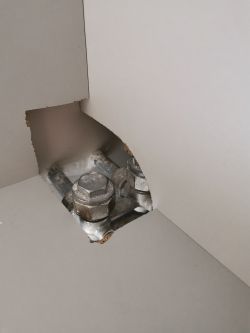Good morning,
Nowhere can I find such a heater and instructions on how to remove it, so I am sorry if it was already somewhere.
I would like to make sure that to remove the radiator with the connection as in the picture, all I need to do is turn the two flat screws and I can easily unscrew the nuts above?
Are these screws valves? Do I have to turn the water off somewhere else?
Is it enough to unscrew these screws and bleed the radiator after reinstalling them? (apartment in a block of flats, new)

Thank you for your help.
Nowhere can I find such a heater and instructions on how to remove it, so I am sorry if it was already somewhere.
I would like to make sure that to remove the radiator with the connection as in the picture, all I need to do is turn the two flat screws and I can easily unscrew the nuts above?
Are these screws valves? Do I have to turn the water off somewhere else?
Is it enough to unscrew these screws and bleed the radiator after reinstalling them? (apartment in a block of flats, new)

Thank you for your help.



